 Small Business Dreams - Inventors Build Products that Innovate I have had many inventors as clients that come to me for marketing assistance. They all have the same problem: the product isn’t selling. They all came up with a brilliant idea, patented it, found a manufacturer,and sunk their savings into production run of their invention. Now they are broke, sitting on a garage full of their great idea gathering dust. What is really funny is that most of the inventions seem like they would sell. They seem like wow! This is a great product! But, no one purchases the product. Small Business Innovations That You Build won't Always Sell Sometimes the best inventions don’t sell in the marketplace. Sometimes the best product doesn’t sell. Consumers are fickle. They are taken by fads. They are predictable in one moment and erratic in the next. Even when the product is extensively tested in the marketplace there can be unpredictable results. New Coke Field of Dreams - Business Innovation That Didn't Work Just ask Coca-Cola. Remember “New Coke” formula that was introduced in April 1985. It tested well in focus groups. It was abandoned 3 moths later due to 400,000 complaint letters and phone calls that Coca-Cola received from disappointed customers. Coca-Cola has big enough pockets to recover from such a disaster; Start-ups don’t. Bindrup’s Advice: Build a prototype, protect it, and get it in front of your market. Let sales drive the production. PHOTO CREDIT: Alex Ford, Creative Commons License, Some Rights Reserved.  Speaking at a Conference instils terror into some people. Here are 10 tips to help you give a better speech.
PHOTO CREDIT: Karin Dalziel, CREATIVE COMMONS LICENSE - SOME RIGHTS RESERVED My student loan payment was due, however the online site where I normally pay my bill was down on two different occasions when I went to access it. I called the loan servicer and explained the situation. The customer service agent for the financial institution told me that the site was down for maintenance, but that it would be working in a couple of hours. The agent encouraged me to pay them over the phone because it would apply immediately to my account, instead of taking 48 hours to post. This sounded good to me, so I submitted my payment to her over the phone. The next time I checked my statement - there was no sign of a payment ever having been made. So I sent off this message from inside of my logged-in area: The bank responded saying that they were unable to show telephone transactions as well as online transactions on my account. This made no sense to me, since it should be easy to list all customer transactions. If they can tell me about it over the phone, why can they not show it to me. The only proof that it was paid is my bank statement. I sent the bank the following: They had a chance to correct the situation, however they sent me a form letter instead. This letter said how much they value my business, right? Nope. They used the words "We truly apologize" and "thank you for your feedback" since they will be "looking into improving their systems". Not improving. Looking into improving. They continued by saying they "valued me as a customer" and are "always here to service your present and future needs". What a load of B.S.! They should have already helped me with my past need that is now a present annoyance. The final blow is that they want me to call their customer service department "at my convenience" to get my full payment history on the loan. keep in mind that the customer service department is the reason why we are here in the first place. They can't simply send me the information I need. (They could have sent it in the message 2x now) They have to send me a message to have me call a number (again). The customer service agent could have warned me against paying via the phone. "Mr. Bindrup, just so you are aware, our IT systems at our International Institution are so bad that we can't actually display to you any transactions conducted over the phone. Would you still like to continue with this phone transaction?" As small business owners, we can not afford to take care of our customers in such a way. Large corporations should take note of this since we have begun to realize as a consumer purchasing block that our voice does matter. Big business has the resources to shine in the customer service arena, however, unfortunately, they seldom do.
1/27/2013 Project Crunch Time: How to Harness Your Creativity Under Deadline Pressure in 5 Simple StepsRead Now  With stress-levels running high and tension peaking, another creative deadline looms on the horizon. The project has progressed to this point, but, now, you are failing in the final lap of the race. You are at a standstill. Creatively drained and out of ideas, you weigh options on how to escape the black hole of this project; you embrace the horror that you cannot muster the motivation to see this project through to completion. How did I get myself into this mess…Again? 1. Relax to Harness Your Creativity First of all, relax. The problem is not that you cannot come up with a creative solution, the problem is that the solution will not be revealed until you have overcome the stressed-out state you are in. When you are in this condition, you are not at your creative best. Besides, this is the same type of deadline that you have dealt with before. This is nothing new. You have survived difficult deadlines before and you will survive this one. Stress can be a silent killer. Your blood pressure is elevated and your body is dealing with higher hormone levels. Take a walk. Take a bath. Go to the gym. Do some yoga. You need to do anything that helps you to calm down and relax, with the exception of alcohol or drugs-we need you with a clear head, after all! Just as in golf, speed and power during a swing, can only be achieved with tension-free arms and wrists. The looser your wrists, the faster your swing will be. 2. Evaluate Your Project Pressure Have you really gone over the needed work done to complete the project. Often times, we build up a project in out minds and make it overly cumbersome. The project might be completed in a short amount of time if you haven’t fully evaluated the job. I have procrastinated projects because I thought that it would take several hours to complete, only to find out that when I truly embraced the scope of the project, I was able to complete the work in under an hour. Even if you go over some of the less essential tasks of a project, you will benefit. You might be possibly missing some key point that can aid you in project completion. Evaluate the project and you will feel much more in control of your life, which will lower your stress level as well. 3. Isolation Helps You Harness Creativity in Crunch Time Get alone! Clear your calendar. Cancel your appointments. Shut the blinds. Put a “Do Not Disturb” sign on your door. Turn off your phone. Not just to vibrate, turn it off! No chatting, videoconferences, Face Time, Google Hangouts, or Skype. No web browsing. No social media. Turn it all off. You need to isolate yourself so you can really focus on getting through this project. A couple of hours of uninterrupted working can make all the difference in a project. When I work from home, this time for me is in the early morning hours before the kids are awake. I am better off going to bed at a decent hour, and getting up pre-dawn to work, because I am well rested. 4. Comfort Keeps Project Pressure Under Control Make sure your surroundings are comfortable. Make sure the lighting is good in the room. Keep the temperature where you need it to be for your comfort. Turn on a fan if you need it. Wear comfortable shoes, and clothing. There are no expectations for you today, except to get that project complete. You are isolated today, so you wont be meeting with anyone. So it is casual Friday! Also, surround yourself with comforting music. For me, Jazz music helps me get into a relaxed state of mind. You need to do what will help you feel at ease. Eat your favorite food. Drink your favorite beverage. (No alcohol. See #1) Be comfortable. 5. Stimulation Helps You Harness Your Creativity Under Project Crunch Time Once you have completed the project preparation, you can begin the fun part: creativity! This is after all, the reason that you are working on the project. You are a creative dynamo with unstoppable innovative ideas! It is time to get pumped up. It is time to stimulate your mind, body and soul. Whether you consume it hot, cold, or in a candy bar, caffeine is America’s stimulant of choice. Its time to get your caffeine on! Music that moves you is next. Find a tune that gets you out of your chair. We need endorphins! Have a variety of stimulating websites, design books, etc that can motivate you to do great things. I love looking at architectural magazines. I get so many creative ideas from them. Another source of creative stimulation are creative blogs. I have a dozen blogs that I read frequently that fuel my creativity. They deal with varying topics from arts and crafts to cooking. Is there a YouTube video that gets you motivated? Get some visual stimulation and you will be able to get the project done. You should feel great at this point because you are living the dream! You are completing the project. You are a proud member of the creative class. Photo Credit: iam_photography, Creative Commons License, Some Rights Reserved http://www.flickr.com/photos/iam_photo/1398724381/ Travel Survival Tips
Traveling for business or pleasure for the most part is great experience. Travel does have its disadvantages, especially when you forget to bring some essential item. Being prepared is the secret to the travel game. Having both worked and lived abroad, I have had to travel in many different environments. There are certain items that I always want to have with me on a business trip because of their usefulness. Most of the items are surprisingly inexpensive. Here is the Travel Survival list that I have compiled of items that I take with me when I travel for business. 13 Essential Items to Pack for Your Business Trip 1. White Hand Towel A basic white 16" x 27" hand towel. The saving grace to this towel is its compact size. Not too big, not too small. It is big enough to shower with even for a big guy like me. Hey, it is not the "Ritz-Carlton" of towels, but it is big enough to get the job done. If you have to wash it, it washes easily in the sink in your room. If you have to use a commercial laundry, It takes up less space and it also dries quicker. That will save you money in the end. At 2 Euro to wash a very small load in France, it adds up. I have used it to shine my shoes, rolled-up as a pillow, and even a dust cloth. It can also be used to clean up a variety of spills. Make sure that it is white so it can be bleached. Most of the time I simply wash it with Zote (See #2) Best of all, you know where this towel has been. Less than $5 www.newlifesystems.com 2. Zote Mexican Laundry Soap I prefer Zote Brand - Choose the pink one, it has a great citronella scent and it just works. Zote gets out stains that would never come out with anything else. When you spill on your favorite tie; Zote to the rescue. It will even remove old stains that have been on clothing for sometime. It also has fabric softeners built in. So when your luggage doesn't arrive, you can rewash your outfit with Zote and you are on your way! Purchase Zote at any Latino Supermarket. It is a great product and it smells so good. Less than $1. www.zote.com.mx 3. Dr. Bronner's Magic Pure Castile 18 in 1 Peppermint Hemp Soap The most unique and refreshing soap you will ever use. Dr. Bronner's website explains that the soap is "A combination of organic extra virgin coconut, olive, jojoba and hemp oils, together with pure essential oils, creates a unique soap that cleans effectively without being aggressive and produces a velvety-lather that leaves the skin silky-smooth and refreshed." it is a little pricey, but well worth it. The soap is ultra concentrated so you should dilute it. A bottle will last you much longer than you think. The awesome peppermint oil in the soap helps wake you up during your morning shower. It is also good to use as a refreshing face wash. I love this product. It is also interesting to read the bottle. Dr. Bronner brought the soap to the United States in 1948; his family has been making soap for 5 generations. All-One! 2 ounce bottle $3 www.drbronner.com 4. Dial "Gold" Antibacterial Soap Dial makes the best antibacterial soap on the market. Lets face it, hotel rooms can have a lot of germs. Don't bother with liquid soap; the bar soap has more of the active ingredient in it than the liquid soap. Forget the little soap in the box that they provide for you. Use Dial to wash your hands, the counter, tables, and you! This will help keep you from bringing home the souvenir of sickness. $3 for a 3 pack. www.dialsoap.com 5. Swiss Army Knife Make sure to check this item if you are traveling by airplane. TSA will not permit a knife on a plane (Duh!) I am 1/2 Swiss. I have been using Swiss Army Knives since I was a kid. They are reliable and useful in so many ways. They are also easy to slip in your pocket and can serve as a weapon for your defense. My favorite model is the "Spartan". It sports 2 blades, a can and bottle opener, screwdrivers, corkscrew and leather awl. $28 www.swissarmy.com 6. Leatherman Multi-tool The main purpose for the leatherman is the needle-nose pliers. I tend to use my Swiss Army Knife more than my Leatherman. However, I have forgotten to pack it on occasion when I really could have used the pliers. You can unstick a zipper, tighten a bolt, etc. A great tool to have on hand everyday. $30www.leatherman.com 7. Glad White Plastic Quick-Tie Kitchen Garbage bags - 13 Gallon These bags are good for dirty clothes, shoes or whatever you don't want to touch your clean stuff. They work great as barf-bags for those of you doing some international travel. They are also good for taking out the trash! $7 for 80 Bags. www.glad.com 8. Plastic Zip Tie Cables These can withstand 40 pounds of pressure. I always throw in a couple of zip ties. just in case. You can use zip ties to repair almost anything; a luggage strap, shoes, luggage lock, etc. Less than $7 for a pack of 20. www.homedepot.com 9. "The Bullet" Fisher Space Pen Developed by Paul Fisher. This pressurized pen was first used by NASA on the Apollo 7 Space flight in 1968. Without the invention of the Space Pen, astronauts would still be writing in pencil! The bullet pen is my favorite. It fits in your pocket, and it always works. It even writes under water. Once you try one, you will be hooked. Made in the USA in Boulder City, Nevada. $25www.spacepen.com 10. Moleskine Notebook I first came across a Moleskine Notebook while living in Europe. I love the simple concept of a banded hard-bound notebook that you can carry with you everywhere. Simple, black, rounded corners, with a pocket in the back. They now come in several different sizes, styles, and colors. I still prefer black. It is always on my person along with my Fisher Space Pen (See #9). $12 www.moleskine.com 11. Zippo Lighter It always pays to have a way to light your path or start a fire. One of the first lessons you learn as a Boy Scout is how to light a fire. Always be prepared. I bought my first Zippo when I was 18 years old. It has been a great tool to have. You probably have to check this one with your luggage as well. $25 www.zippo.com 12. Sewing Kit Make sure to have a sewing kit with you when you travel. If you need a needle and thread or a button, this item is worth its weight in gold. $5 www.travelstore.ricksteves.com/ 13. Duct Tape This one is a no-brainer. A must have for on the go repairs. A million and one uses come to mind for Duct Tape. You can even make a nice tie or wallet if you get bored. A roll is very nice to have if you need it. www.duckbrand.com Online Video: A Small Business Owner's Friend
In December 2005, a small start-up company launched a site that allowed users to post their own video clips. By July 2006, the site had become the web's fastest-growing site, generating 100M video views and 65,000 video uploads a day. In October 2006, the company was bought by Google for $1.65 Billion. That company was YouTube. Consider the ramifications of the following figures according to YouTube's statistics page:
Dealing with Mobile and Devices:
Small Business Owners can not ignore the huge numbers of potential clients that online video can bring to your website. One common complaint that I hear from Small Business Owners is that they don't have the resources or the knowledge to create or edit video that they can upload to YouTube. I have compiled a list of Online Video Making Resources. So, why wait? Get out there and create! Online Video Making Resources Animoto: Animoto is a great site that turns photos, video clips, and music into stunning video masterpieces to share. It is very fast and easy. Animoto also offers commercially licensed music that is sellable with a professional license. You can make a 30 second movie for free, but has limited styles and music. You can download your movies for burning to a DVD or share the videos to YouTube easily. http://www.animoto.com Stupeflix: Stupeflix allows users to create video mixes of photos video clips and music. Some of their features include: Video theme templates, the ability to add photos and video clips from social media or a local computer. Users can also edit text, add maps and use Stupeflix's text to speech capability which makes voiceovers a snap. Users are also able to choose from over 130 licensed music tracks, or they may upload their own music as well. Pricing plans include: Personal $5/month: for unlimited videos, 360 video quality or Personal HD $8/mo.: HD720/360p video quality. Stupeflix offers a Pro version for $39/mo. which allows users to white label videos and use commercial licensing. Their Reseller package is $59/mo. and allows users reseller licensing (sell videos to clients) http://www.stupeflix.com Flixtime: - Allows users to create an account, upload pictures, video clips, and music. Users can add cover images for the clip and text slides. Users additionally can choose to save video in either 640 x 360 dimension, or iPod-friendly 320 x 180, and in either FLV, MP4, or DIVX formats. Videos can be 60 seconds long. http://www.flixtime.com The Bad Salesperson Experience
I was interested to tour some newly decorated model homes that were being built in my area. The homes looked promising from the outside, so I stopped in to view the models. The sign on the door said that the operating hours were 11am – 6pm. I stopped by at 11:45am and was surprised to find the door to the sales center locked. Luckily, there were workers painting the garage that day and they let me inside the fenced area to view the model homes. After spending about a half of an hour viewing the model homes, I went back to the sales center to speak with the salesperson and get a list of prices for the houses. I was once again greeted with a locked door and “Open for Business” sign in the window. Where was the salesperson? I asked the crew of painters if they knew where the salesperson was. They had not seen the salesperson. I left a little disappointed that I could not get the information about the pricing of the homes. A couple of weeks later, my wife and I were driving in the area of the new homes. We stopped by to see them together. There was a car in the small parking lot next to the model homes that had a customized license plate that indicated that this car belonged to a real estate salesperson. Oh good, I thought, the salesperson is here this time. Imagine my surprise when a locked door once again greeted me. The “Open for Business” sign that clearly stated the 11am – 6pm office hours taunted me from the other side of the glass door. It was 11:30am and the sales office should have been open. I didn’t expect the same thing to happen twice in a row. Perhaps the sales person is showing the models to a buyer, or using the restroom, I thought. Just to make sure that no one was in the sales center I knocked on the window. Just as we were walking away, we heard a key in the lock and the door opened. The salesperson with her cell phone to her ear, barked: “I am on a weekly sales conference call and I don’t open the sales office until its finished!”. “Can’t we just look at the houses”, I asked. She motioned to the door that led to the models as she pushed a price list towards us and quickly retreated back to her desk and her phone conference. As we left the sales center, my wife commented to me, “I bet she doesn’t sell many houses”. I agreed. We made our way to the first model home and I was shocked that the door to the model was once again locked. Unbelievable! I thought. So were the doors to the other model homes. The salesperson had not even bothered to open the doors to the model homes. Now we were annoyed. Annoyed at the offensive salesperson. Annoyed at the situation. Annoyed that we were wasting our time. Why did the salesperson send us out the door to look at the models when she knew that they were locked? She is the only one there. It is part of her job to open and close the model homes every day. As we left my wife said to the salesperson, “you should not have office hours on your door if you don’t intend to keep them”. She was right. We left and went to visit a different set of model homes that were built by the same homebuilder that built the homes with the bad salesperson. We were this time greeted by a warm, and friendly salesperson. She introduced herself and asked our names and gave a brief description of the features of each model home. She also told us that she was available to answer any questions that we had. What a difference a Good Salesperson makes. Who would you feel more comfortable purchasing a home from? This entire situation could have been avoided. Here are 5 tips to help you avoid being a bad salesperson. 5 Tips to Avoid Being A Bad Salesperson TIP 1 – Treat Customers with Respect Always treat your customers with respect. This is so often overlooked. Every human being deserves respect. Put yourself in the customer’s shoes. How would you feel if you were being treated in the same way you are treating a customer. Be a decent human being. When you show respect, other people show you respect. TIP 2 – Keep Your Promises The old adage “Under Promise and Over Deliver” still holds true. Every time you fail to keep your promises tarnishes the brand. It doesn’t matter how much money you spend; you cannot overcome consistent promise breaking with marketing efforts alone. Do your part and keep your word to your customers. TIP 3 – Be Pleasant You are in a business where you have to deal with people. The least you can do is make the interaction positive. Chemistry is vital in sales. Make sure that you have what Napoleon Hill referred to as a “Pleasing Personality” TIP 4 – Measure Customer Service One key teaching I learned in Business School is that if it is important, it is measured. There are businesses that claim that they are focused on customer service, however they don’t measure how they perform customer service. Put a system in place to measure your customer service efforts. If you don’t measure it, how will you know that it was delivered effectively? TIP 5 – Reward for Service Goals After you measure customer service, you must tie rewards to it. Just like sales goals, make sure that there are financial benefits tied to making your customer service goals. Revisit these goals on a weekly basis with your team. PHOTO CREDIT: simongroenewolt Creative Commons License. Some Rights Reserved http://www.flickr.com/photos/simongroenewolt/11739507/ Las Vegas Latin Chamber of Commerce Luncheon
The Las Vegas Latin Chamber of Commerce held its monthly luncheon for July at the Suncoast Hotel & Casino’s Ballroom area on Friday, July 20, 2012 from 11:30 am to 1:00 pm. This event was sponsored by Cox Communications and Steve Schorr, Vice President of Public and Government Affairs for Cox Communications was also the MC of the event. During the event instead of the usual “please silence your cellphones”, Schorr requested for those attending kept their cell phones on during the event’s presentations, even to bring in iPads, tablets, and any other web enabled devices, in order for them to demonstrate their new Cox Business Hotspot service. This service will allow businesses to offer Wi-Fi service inside their offices to patrons, and it is easy to use. All guests got to experience the new Wi-Fi internet service while inside the luncheon venue. During the event speakers Ardell Galbreth, Interim Executive Director of the Workfoce Connections, and Dr. Rene Cantu, executive Director of the Latin Chamber Community Foundation and recently appointed CCSD Trustee Board member, spoke about two opportunities that encourage businesses to participate in On the Job Training programs; placing workers with subsidized wages for defined periods of time to help you work efficiently and give them hands on experience. Also available are youth career readiness, education, mentoring and assistance programs which have been designed to prepare teens for future careers. These programs not only train them professionally but help them finishing school or connecting with jobs; they place them on the right paths for success. Additional speakers were Kathy Carrico, Training Director for the Nevada Small Business Development Center, and Ernesto Barroso, Owner of Barroso & Sons, LLC and maker of Señorita Maria Vino De Flor De Jamaica Wine. Carrico and Barroso spoke about the NXLevel Entrepreneur Training Program that begins this month at the Latin Chamber of Commerce. Barroso, an entrepreneur and client of the Nevada Small Business Development Center will be teaching on of the NXLevel courses in Spanish. You can find out more about NXLevel Training for Entrepreneurs at: http://www.lvlcc.com/nxlevel/ 6/22/2012 Holiday Marketing 101: A Lesson for Small Business Owners Learned from McDonald's McRib.Read Now Holiday Marketing: A Lesson Learned from McDonald's McRib.
In the fall of 2011, McDonald's brought the McRib sandwich back nationwide for the first time in 16 years. The McRib has become a cult hit with fast food diners. Despite McRib's limited availability of a few weeks, McDonald's posted a nearly 5% increase in sales in November 2011 presumably due to the return of the sandwich. McRib disappeared from McDonald's nationwide menus just as it did the year before, leaving McRib fans to nurse a yearlong craving for the novelty sandwich. The Secret to the Success of McRib: Limited Availability. What makes the McRib such a hit among its fans? I believe that the popularity of the McRib stems from its limited availability. It is only available in the fall. By limiting the release of the sandwich to only the fall, McDonalds has created demand that is seasonally based. We associate seasons with foods that we eat. For instance, I love eggnog. I feel excited when the weather turns cold because I know that soon eggnog returns to the shelves. Cranberries are another example of a food item that we eat mainly during the fall and winter. By keeping McRib a seasonal product, McDonalds lets its loyal McRib enthusiasts enjoy the thrill of rediscovering their beloved sandwich every year. Small business owners should take a lesson from McDonalds. Consider promoting a product or service that you only offer during limited times of the year. You may just create a loyal following of dedicated fans. photo credit: Calgary Reviews - Some Rights Reserved http://www.flickr.com/photos/calgaryreviews/5901096115/ Business, Marketing, and Life Lessons Learned From My First Job: Paperboy I couldn’t wait to turn eleven. Turning eleven was big deal - You had to be eleven to become a paperboy. My first job as a paperboy taught me many lessons in Business, Marketing, and Life. Business Lessons Learned Getting Paid Is Difficult - We had to Collect Money directly from our customers. We had to go collecting every month. It was the least favorite activity for us. – Usually the boys would say,: “I want to go and buy some comic books – I have to go collecting”. No collecting = no money. Sometimes I would have a customer who would refuse to pay – we could negotiate with them, or use our “nuclear” option: Stop delivery. It Takes Supplies to Get the Job Done - You had to make sure that you had enough rubber bands and plastic bags on hand in the case of foul weather. Rain spelled disaster for a paperboy. Fortunately, the bags and the rubber bands were free. Risk is Always Present in business – I had to content with dogs (Everyone knows that dogs hate Paperboys), rain, ice, hills, cars and accidents. On one occasion, I was knocked unconscious when the straps of my paper bag came undone and wound around the front wheel of my bike which sent me flying through the air with no helmet – I woke up in a twisted mess with the bike in the gravel on the side of the road with a goose egg on my head. Do it Right The First Time - We got charged $1 for every complaint we got from someone who couldn’t find their paper or if the paper was wet or under the car or not delivered. Every paper I threw had a $1 risk associated with it. If I threw the paper a little off course, I had to stop and fix it. I couldn’t afford complaints. Marketing Lessons Learned Marketing moves the world – The advertising section of the Sunday paper was dropped off to me on Friday morning. All the ads were already sold – we just had to wait until Sunday to get the actual news section of the paper that was always smaller than the advertising section. The ad section was very important Perks are a great reward- Every job has its perks. My mom got the coupons first, and our group of paperboys got rewarded with pizza parties for having low numbers of complaints. The best perk of all: People Tip for a job well done. We got to see our customers face to face each month when we collected money. If you did a good job, you most often got a tip. Christmas time was the best time to collect. During the holidays there were always tips, gifts, and treats. You Need Data to Make Decisions- Every day we had a printout of the new subscribers to the paper and the ones that want to be removed from paper service. The list also showed us any complaints that customers had made to the newspaper. I had a very valuable list in front of me. The list shows me my “difficult” clients as well as my new clients that I needed to impress. Most important of all was the list of those who wanted to be removed from the list. I knew which ones I had serviced poorly and exactly why they were quitting the paper. It was a sobering fact to see that my revenue was based upon how happy I kept my customers. How to Assess a Deal – Trash collection happened 2 times a week and we would get first pick at what people were throwing away. One mans trash is another mans treasure. There were always treasures to be found that people put out on the curb as trash. Some of these treasures were “Fools Gold”, and really deserved to be in the trash. However, other treasures were wonderful to find. Work is Work – Newspapers are a dirty business – your hands and your paper bag was always soiled from the ink. The ink got onto your clothes as well. It was hard work. Deadlines are important – All papers had to be delivered by 6am. No exceptions Life Lessons Learned People Do Bad Things - At 11 years old, I was well aware of the ugly side of humanity. I have seen next-door neighbors steal the paper from their neighbor. People would lie and say that their paper was not delivered, when I knew that I had put one on their driveway. I always had that one difficult person who would constantly complain to get free papers or a discount on their subscription. Larry, my paper dealer, who I turned in my collection money to and who brought the stacks of newspapers to my front porch every day, ended up stealing all the money that we as a group of paperboys collected and skipped town. Know when to ask for help - Sunday papers were brutal on us paperboys. Luckily, Dad agreed to drive me around in the car on Sundays. That made life a lot easier for me. Sometimes the paper was so big on Sunday that I had to take two loads to complete the route. My Dad liked to help. He thought that the hard work was good for me. He was right. I am grateful to my Dad because on more than one occasion he would come into the entryway of our house where I had fallen asleep folding papers at 4am to nudge me awake. Work is a Fraternity – All my friends who had paper routes were done at 6am as the sun came up. We would meet on Saturdays at a convenience store for a healthy breakfast of chili-cheese hot dogs while playing arcade video games and reading the latest comic books. After all, we could afford it. We were self-employed micro business owners who were flush with cash because we always went collecting on Fridays; Because everyone knows Friday is payday. Photo Credit: Creative Commons License, Some rights Reserved: rosscrawford1
http://www.flickr.com/photos/rosscrawford1/2831556062/ Efficiency vs. Effectiveness – A Small Business Dilemma
Capitalism in Action: Efficiency In business schools around the world, M.B.A. candidates are prepared to return to the corporate workplace, armed with tools to make business more efficient. Finance makes the most efficient use of funds. Marketing aims to bring the most efficient return of capital invested. Management attempts to make the most efficient use of human and technological capital of a business. Efficiency is good. It ensures that profits are maximized and that waste is minimized. It is a foundational principle of modern business analysis. We analyze operations to make them more efficient, thus making the operation more profitable. Profits keep a business growing and growing businesses need workers. The business is now a job-creating machine. Profits are re-invested into capital equipment that enables the business to reach additional possibilities of production. The business now lowers production cost which makes the enterprise even more efficient. Profits swell and are returned to the shareholders as dividends. This is capitalism in action. This is efficiency. This is the mantra of most business school programs and the desire of most small business owners. The Harmony of Effectiveness and Efficiency Small business owners have a dilemma: How do I balance efficiency and effectiveness in my business. Entrepreneurs need to question the purpose of the business. Why does the business exist? Is my business doing the right things? Am I strategically working in the right areas? Efficiency needs to be tempered with effectiveness to organically grow the business. When a small business owner loses sight of the purpose of the organization, efficiency takes over as the predominant theme. Efficiency alone produces less than with effectiveness combined. Efficiency needs work in harmony with effectiveness – form and function, Yin and Yang, left-brain and right-brain, etc. The balance of these two ideals for a small business creates a robust, growing business with a vibrant business culture: A business that is profitable as well as conscious of its stakeholder community. People become a focus of the small business. Without effective and efficient people, a small business will fail to produce the best results. Ideas for Creating a Business Environment of Effectiveness and Efficiency Review Your Business Strategy – Set aside some time every month to review your business strategy. Ask yourself: Am I working in the right business areas? Review your personal business goals. What is your exit strategy for the business? Evaluate Profitability – Make sure that your business is making a profit. Business owners need to make sure their product and service offerings have sufficient profit margins to ensure growth. Make sure you know which activities generate the highest profit margin. Check Your Production Capacity – How many units of a product can you make in a day? What is your maximum throughput? How many service based clients can you handle at one time? If you don’t know your production capacity, then you won’t know when it is appropriate to scale your business. Plan for Growth – What happens if your business doubles in the next 90 days? Are employees trained to handle the additional workload, or do you need begin training now? How ready are you ready to scale your operation to capture the opportunity? Do you have a written set of procedure for your business? Make a written growth action plan that addresses these issues. Photo Credit: MAMJODH via Flickr - Creative Commons License Don’t get me wrong; a business plan is a useful tool. We write them for two reasons. Reason 1: It helps us as small business owners assess risk on paper so we can make an informed decision about the viability of the business. Reason 2: Financial institutions want it to assess how risky you are as a potential borrower. A business plan is fiction. It is a fabrication; a story of what could be. I often hear entrepreneurs say when pitching a business plan, “Our numbers are very conservative”. No, your numbers are not conservative. They are fiction. They have not happened yet. It is all “Pie in the Sky” thinking. By its nature, a business plan is optimistic. No one ever comes into to the bank with a business plan that shows how the business fails in nine months. Once you commence operations, all bets are off. Your business is in a constant state of flux. Customers, marketplace, and technology are continuously evolving. Your business plan needs to be continuously updated to reflect the changing business environment.
Here are some resources to help you draft your business plan: SBA: How to Write a Business Plan NSBDC's: Business Plans made Simple SCORE's: Business Planning Templates and Tools Seth Godin's: The Modern Business Plan The Funding Roadmap: The Business Plan Reinvented Operating Hours Sign Failure
I wanted to eat lunch at a Chinese restaurant that I have been to before. The restaurant serves its food buffet style. The food is good and so is the price; A perfect spot for a quick lunch. When I arrived at the restaurant, I was greeted by a sign on the door that said that the operating hours of the restaurant were 11am until 11pm, Monday through Friday. The time was 11:30am, clearly within their hours of operation. I was supervised to find that when I pulled on the door, the deadbolt was still locked. I looked in the tinted windows and thought at first that this restaurant had gone out of business. There was no activity to be seen. No people, no greeters - the lights were even off. Then some motion caught my eye. It was the golden lucky cat figure that the restaurant has in the waiting area. The lucky cat was waving its paw - someone had to have turned it on. Perhaps the owners of the restaurant had forgotten to open their doors or they had lost track of time. With my face pressed against the window, I scanned the interior for additional signs of life. The buffet steam tables sat in the back of the establishment and a you could note steam coming off of the heated water. There was steam, but no food. A couple standing nearby told me that they had been waiting since 11am for the anticipated opening. They had not seen anyone either. They should open soon, I thought, I sat down at an outside table under the front patio of the business. While I waited, I observed. More than a dozen potential patrons approached the restaurant in anticipation of the same quick lunch that we were hoping to eat. Each one of them did the same thing that I did: they tried the door, pointed to the sign where the operating hours were posted, and pressed their faces to the glass to see why there were incongruences between the sign and the locked door. They all saw the lucky cat just as I did. I was fascinated by the duplicate behavior and the disbelief the potential patrons had when they found the information on the door to be untrue. I decided to wait until noon to see if the place would actually get it together and open for lunch and to observe how people continued to act towards the sign on the door. Just before noon, a large family approached the door. Their behavior was identical to everyone else’s. To my surprise, a man dressed as a cook came to the door. Instead of opening the door, he made hand signals to the family that he needed more time before they were to open. The family pointed to the sign on the door in protest. They were annoyed that he would not let them in and soon left. At noon I left as planned. As I counted the people who tried to eat at this restaurant today, my count came to 15. Each of them including myself had expected to eat at the restaurant. All of us left disappointed. Those 15 people could be the profit margin for the day for that business. How many of them will post on their Facebook page a negative comment about this experience? How many will never return? The Importance of Signs as Brand Promises We as consumers are exposed to hundreds of signs every day. What is amazing is that we believe what we see on a sign. We take them literally at face value. We are so used to being directed that we rarely question if the information is correct. Signs are brands. A brand is a promise of an expected product or service. We all expected that the brand of this restaurant was that they were open at 11am. They were not. They lied. Their brand lied and broke the brand promise. Now the only brand promise we have is that their brand is unpredictable. Unpredictability in the marketplace does not fetch a premium price. It gets what is leftover, because that is what it deserves. No one should have to beg a business to take their money. A business should make it easy for customers to transact with them. If the business was having a problem that day, they needed to communicate that with their customers. A simple piece of paper that said "Sorry, we are opening at 12pm today" would have been sufficient. That would have preserved their brand with the 15 of us and kept their brand promise; even if we would have chosen to go elsewhere for lunch. A sign is a brand promise. Customers will hold you to your sign. It is your unwritten contract with them. Don’t break promises to your customers. This restaurant will need more than a lucky cat to help them survive if this is the way they keep their brand promise. Photo: Steve Snodgrass, Creative Commons License, Some rights Reserved  I have had many inventors as clients that come to me for marketing assistance. They all have the same problem: the product isn’t selling. They all came up with a brilliant idea, patented it, found a manufacturer, and sunk their savings into production run of their invention. Now they are broke, sitting on a garage full of their great idea gathering dust. What is really funny is that most of the inventions seem like they would sell. They seem like wow! This is a great product! But, no one purchases the product. Sometimes the best inventions don’t sell in the marketplace. Sometimes the best product doesn’t sell. Consumers are fickle. They are taken by fads. They are predictable in one moment and erratic in the next. Even when the product is extensively tested in the marketplace there can be unpredictable results. Just ask Coca-Cola. Remember “New Coke” formula that was introduced in April 1985. It tested well in focus groups. It was abandoned 3 moths later due to 400,000 complaint letters and phone calls that Coca-Cola received from disappointed customers. 3/22/2012 The National Export Initiative (NEI): Helping Small Businesses Compete on a Global ScaleRead Now The National Export Initiative: Double U.S. Exports in the next 5 Years On March 11, 2010, US President Barack Obama signed an Executive Order which formed the National Export Initiative (NEI). NEI has the broad goal of improving conditions that directly affect the private sector’s ability to export. President Obama’s plan has the goal of doubling exports from US companies in the next 5 years. The NEI calls for removal of trade barriers and advocacy assistance directed especially at small businesses to help them overcome the barriers of entering new export markets. The National Export Initiative: U.S. Priority Markets There are several emerging market countries that the NEI has identified as priority export targets for US products. These countries include: China, India, Indonesia, Taiwan, Thailand, and Vietnam. The NEI has put together a series of videos about doing business in these markets. All of this excellent information is contained in the Federal portal for international trade: Export.gov. Visit the International Trade Administration’s YouTube Channel for over 50 webinars about doing business in regional environments. The Trade Information Center For additional information or general trade questions, you may contact the Trade Information Center (TIC) at: 800.872.8723 (1-800-USA-TRAD(E)), or send an email to: [email protected] The TIC operates between 8:30 AM & 6 PM EST. You can get answers to your exporting question topics including: Tariffs, International Documentation, Logistics, Free-Trade Agreements, Country-Specific regional Information, Trade Data, and General Export Information. U.S. Export Assistance Centers The Commercial Service has a network of U.S. Export Assistance Centers that house export and industry specialists. These centers are located in more than 100 U.S. cities and over 80 countries worldwide. These trade professionals provide counseling and services to assist U.S. businesses in exporting their products and services. They can assist in: Assessing market potential for your product or service, develping and implementing a market enrty strategy, and identifying potential trade partners in foreign markets. National Export Initiative Videos |
Details
Archives
July 2024
Categories
All
|
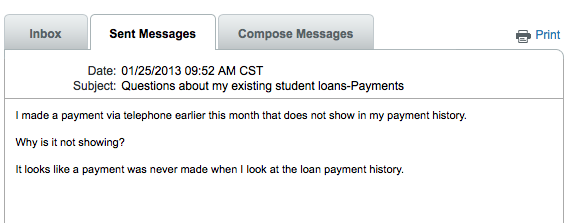
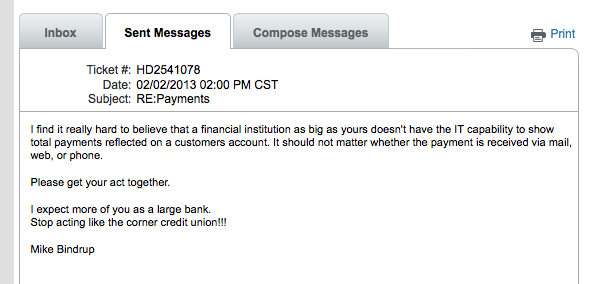

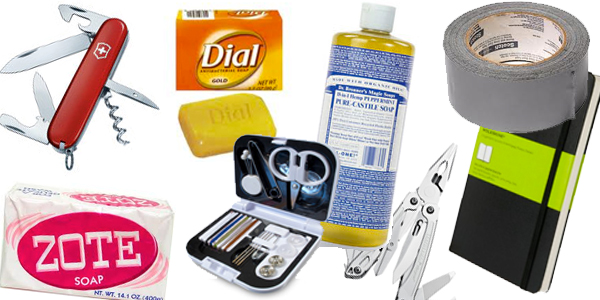






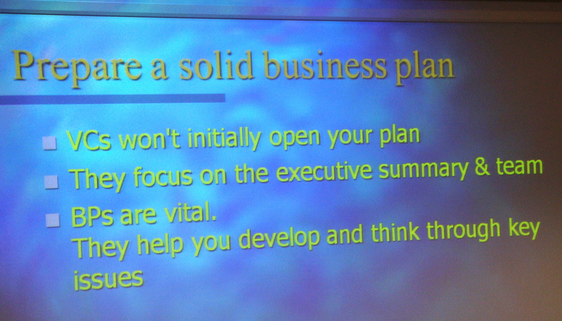

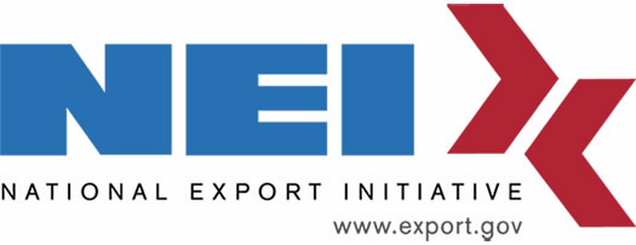
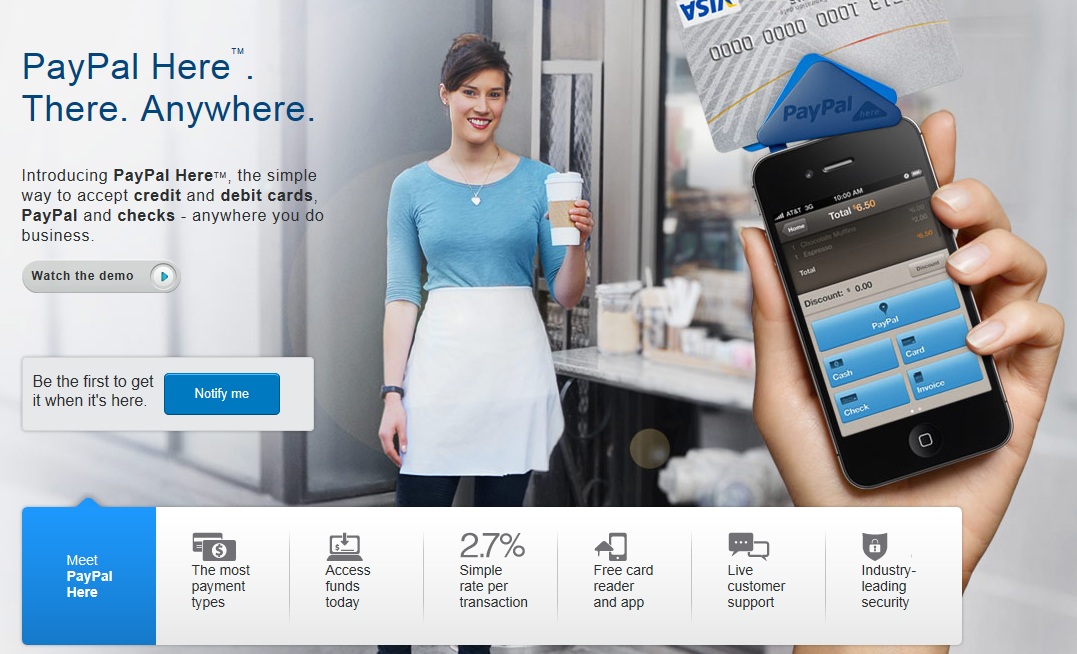

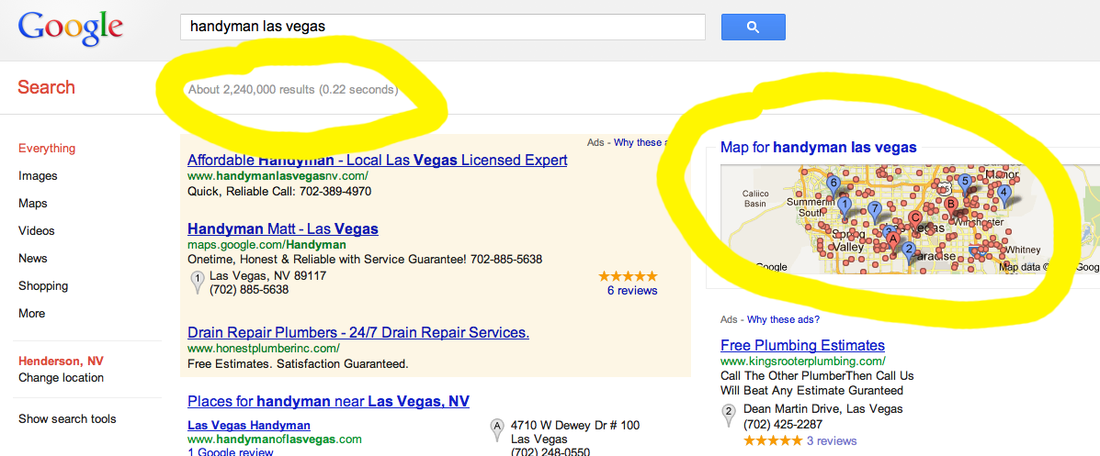

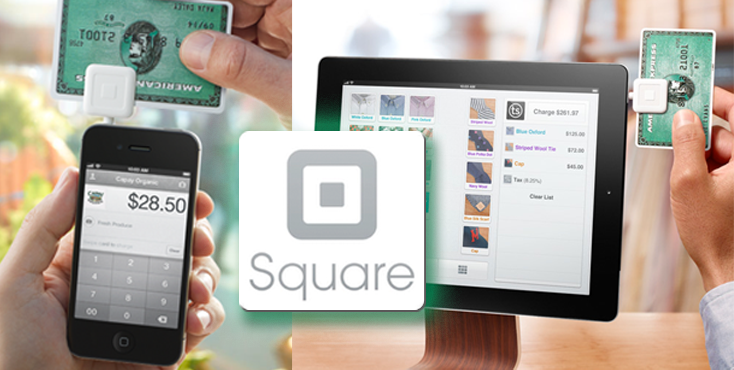



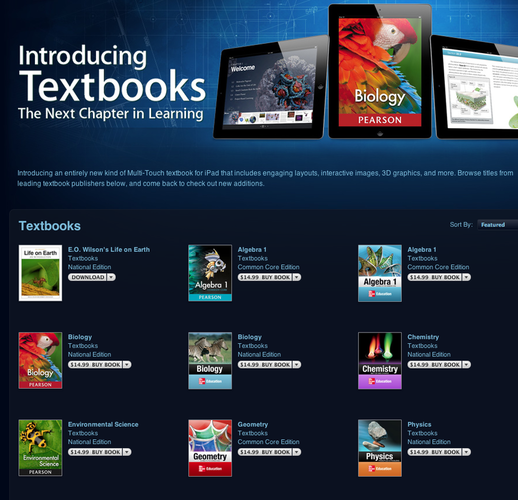

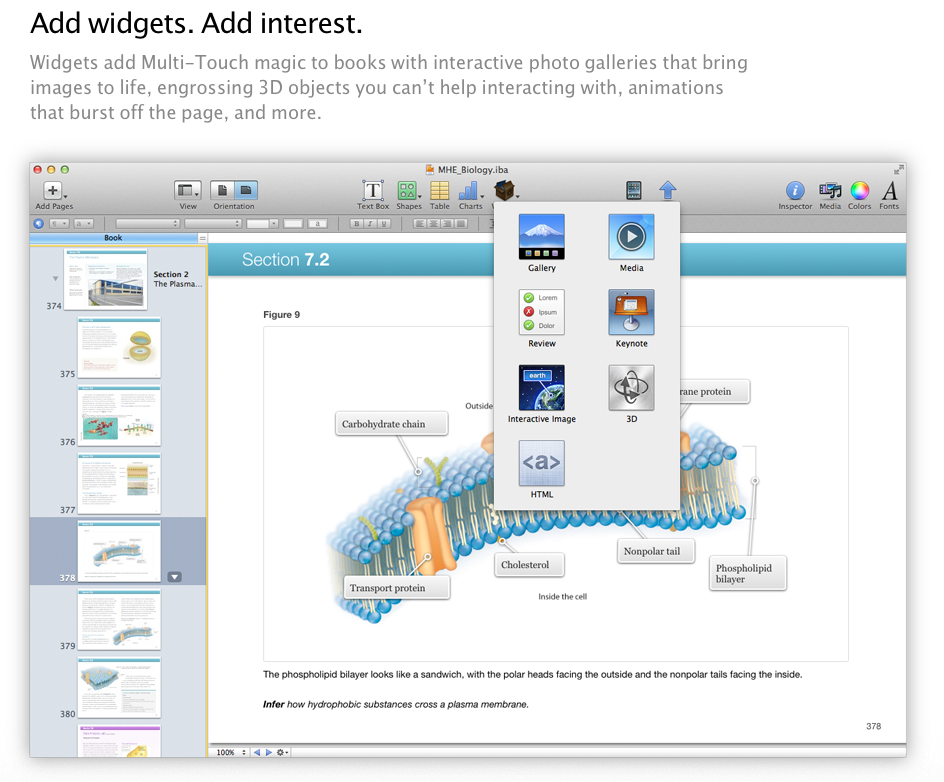
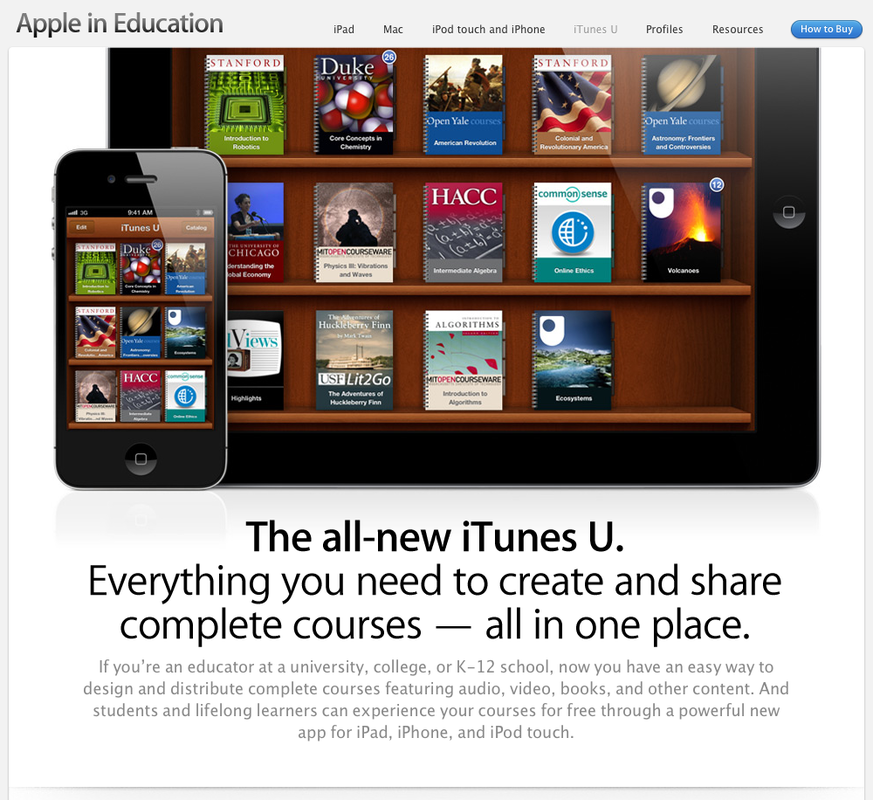
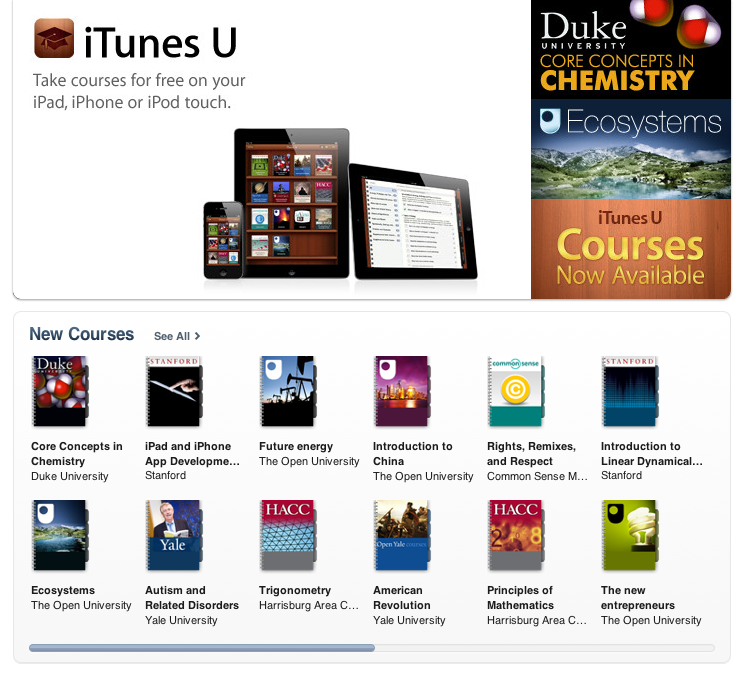

 RSS Feed
RSS Feed
